I am trying to create a UI like the below. I have a startDate and endDate (e.g. 1:55am and 11:35am). How can I proportionally (using Geometry reader) find each hour in between two dates and plot them as is done here? I am thinking at some point I need to use seconds or timeIntervalSince perhaps, but can't quite get my head around how best to go about it?
my code so far which gets the hours correctly, but I need to space them out proportionally according to their times:
struct AsleepTimeView: View {
@EnvironmentObject var dataStore: DataStore
static let sleepTimeFormat: DateFormatter = {
let formatter = DateFormatter()
formatter.dateStyle = .none
formatter.timeStyle = .short
return formatter
}()
var body: some View {
Color.clear.overlay(
GeometryReader { geometry in
if let mostRecentSleepDay = dataStore.pastSevenSleepDays?.last, let firstSleepSpan = mostRecentSleepDay.sleepSpans.first, let lastSleepSpan = mostRecentSleepDay.sleepSpans.last {
VStack(alignment: .center) {
HStack {
Text("\(firstSleepSpan.startDate, formatter: Self.sleepTimeFormat) ")
.font(.footnote)
Spacer()
Text("\(lastSleepSpan.endDate, formatter: Self.sleepTimeFormat)")
.font(.footnote)
}
HStack(spacing: 3) {
ForEach(dataStore.sleepOrAwakeSpans) { sleepOrAwakeSpan in
RoundedRectangle(cornerRadius: 5)
.frame(width: getWidthForRoundedRectangle(proxy: geometry, spacing: 3, seconds: sleepOrAwakeSpan.seconds, sleepOrAwakeSpans: athlyticDataStore.sleepOrAwakeSpans), height: 10)
.foregroundColor(sleepOrAwakeSpan.asleep == false ? TrackerConstants.scaleLevel5Color : TrackerConstants.scaleLevel8Color)
}
}
HStack {
ForEach(getHoursBetweenTwoDates(startDate: firstSleepSpan.startDate, endDate: lastSleepSpan.endDate).map { Calendar.current.component(.hour, from: $0) }, id: \.self) { hour in
HStack {
Text("\(hour)")
.font(.footnote)
Spacer()
}
}
}
HStack {
HStack {
Circle()
.foregroundColor(TrackerConstants.scaleLevel8Color)
.frame(width: 10, height: 10)
Text("Asleep")
.font(.footnote)
}
HStack {
Circle()
.foregroundColor(TrackerConstants.scaleLevel5Color)
.frame(width: 10, height: 10)
Text("Awake")
.font(.footnote)
}
Spacer()
}
}
}
}) // end of overlay
}
//helper
private func getWidthForRoundedRectangle(proxy: GeometryProxy, spacing: Int, seconds: TimeInterval, sleepOrAwakeSpans: [SleepOrAwakeSpan]) -> CGFloat {
let totalSpace = (sleepOrAwakeSpans.count - 1) * spacing
let totalSleepTime = sleepOrAwakeSpans.map { $0.endTime.timeIntervalSince($0.startTime) }.reduce(0, +)
guard totalSleepTime > 0 else { return 0}
let width = (proxy.size.width - CGFloat(totalSpace)) * CGFloat(seconds / totalSleepTime)
return width
}
func datesRange(from: Date, to: Date, component: Calendar.Component) -> [Date] {
// in case of the "from" date is more than "to" date,
// it should returns an empty array:
if from > to { return [Date]() }
var tempDate = from
var array = [tempDate]
while tempDate < to {
tempDate = Calendar.current.date(byAdding: component, value: 1, to: tempDate)!
array.append(tempDate)
}
return array
}
func getHoursBetweenTwoDates(startDate: Date, endDate: Date) -> [Date] {
var finalArrayOfHours = [Date]()
guard endDate > startDate else { return finalArrayOfHours }
let arrayOfHours = datesRange(from: startDate, to: endDate, component: .hour)
for date in arrayOfHours {
let hour = date.nearestHour()
finalArrayOfHours.append(hour)
}
return finalArrayOfHours
}
}
extension Date {
func nearestHour() -> Date {
return Date(timeIntervalSinceReferenceDate:
(timeIntervalSinceReferenceDate / 3600.0).rounded(.toNearestOrEven) * 3600.0)
}
}

